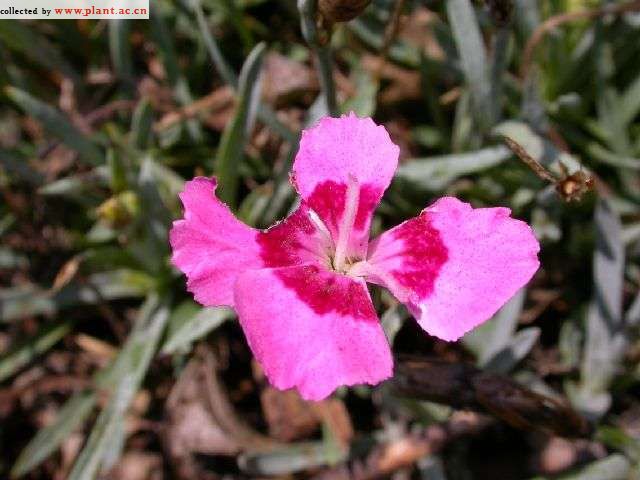Dianthus Pixie StarCarnation
科:石竹科
Family:Caryophyllaceae
属:石竹属
common name:Carnation
introduce:Plant Type: Herbaceous perennial
Family: Caryophyllaceae
Missouri Native: No
Native Range: None
Height: 0.5 to 0.75 feet
Spread: 0.5 to 1 foot
Bloom Time: May - August
Bloom Color: Pink (double)
Sun: Full sun (only)
Water: Medium moisture
Maintenance: Low
General Culture:
Easily grown in average, medium wet, well-drained soils in full sun. Prefers fertile, alkaline, somewhat gritty loams with good drainage. Plants may die out in the center if drainage is not superior. 慞ixie Star?is reportedly a perpetual bloomer that will bloom spring to frost in cool summer climates, however it is not yet clear how this plant will respond to the heat and humidity of a St. Louis summer. Consider shearing off all spent flowering stems if bloom ceases in the heat of summer in order to tidy the planting and to promote additional bloom in late summer or early fall.
Noteworthy Characteristics:
Developed in England, the Star Series is a new group of hybrid dianthus cultivars derived from alpine dianthus. Star Series plants are clump-forming plants that are noted for compact growth, fragrant blooms, abundant flowering and lengthy bloom period. Narrow, lance-shaped, glaucous dark green leaves typically form a dense mounded cushion (to 5?tall). 慞ixie Star?features pink, very fragrant, double flowers with deep pink eye zones. Flowers bloom singly atop stems rising slightly above the foliage mound. Lenghty bloom period of spring to late summer and possibly to frost. Plant patent applied for (PPAF).
Problems:
No serious insect or disease problems. Dianthus is generally susceptible to crown rot, particularly if grown in wet, poorly drained soils. Leaf spot may occur in humid summers, particularly where plants are crowded.
Uses:
Rock gardens, border fronts, edgings, fragrance gardens and containers. When massed, these mat-forming plants can form an attractive ground cover.
